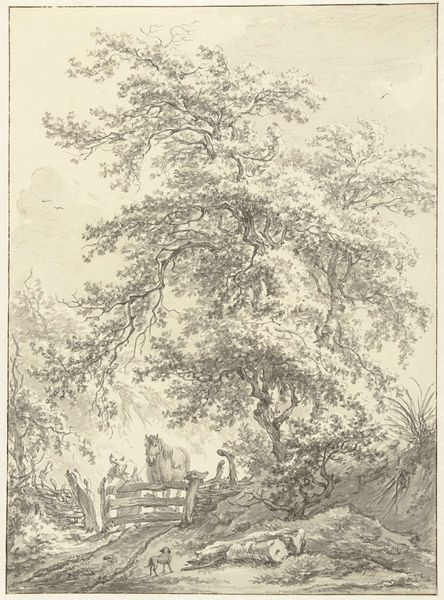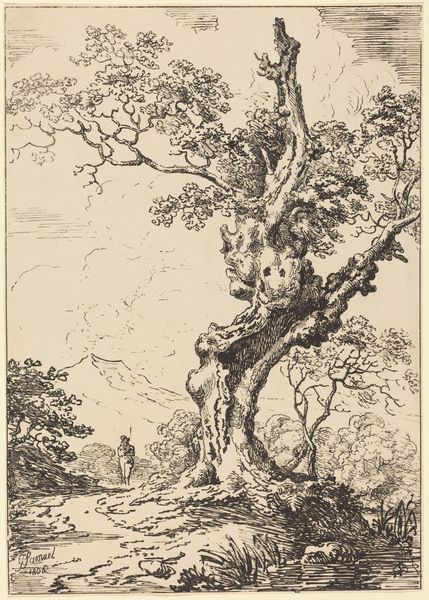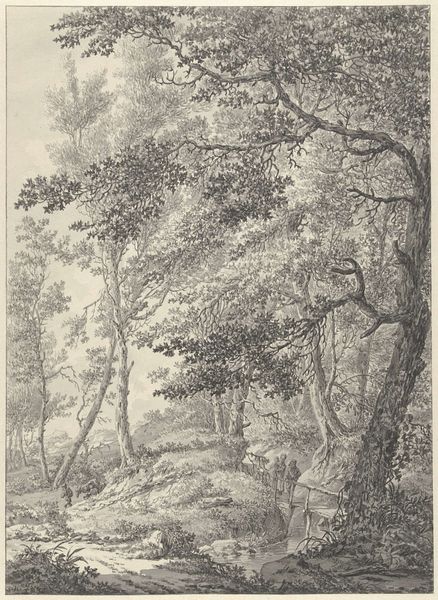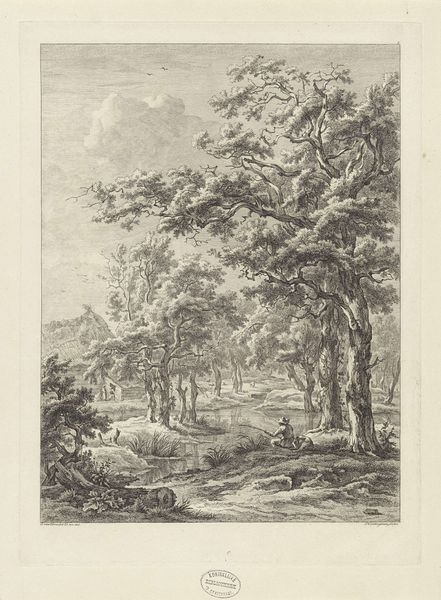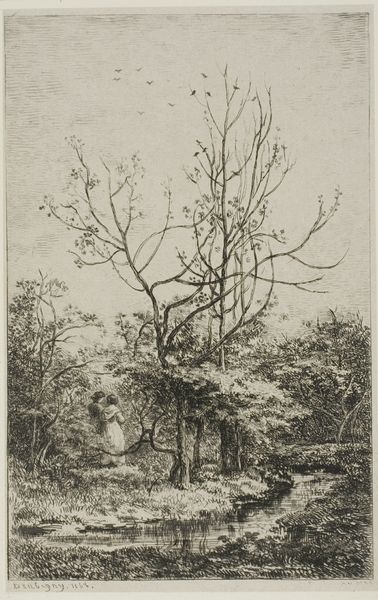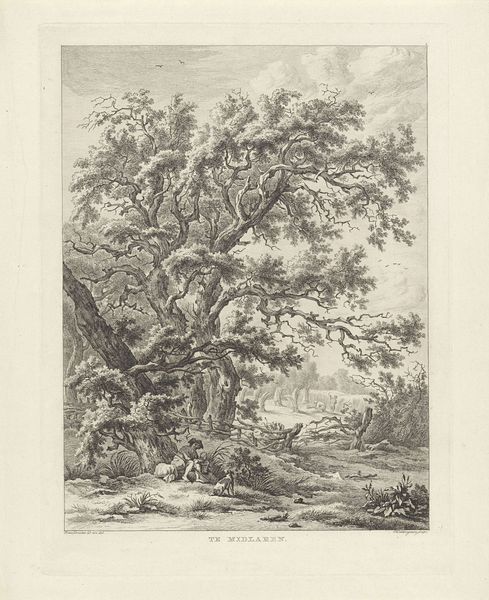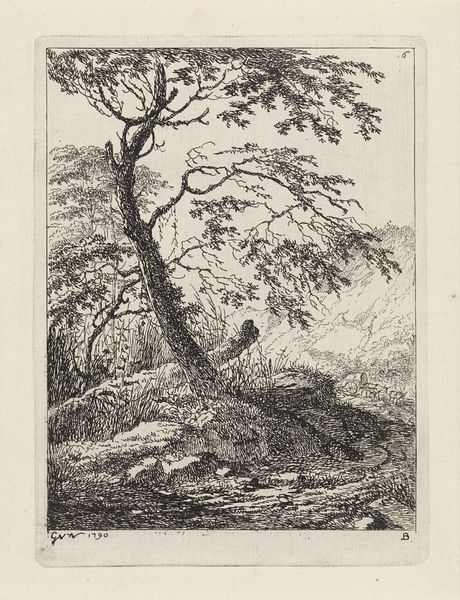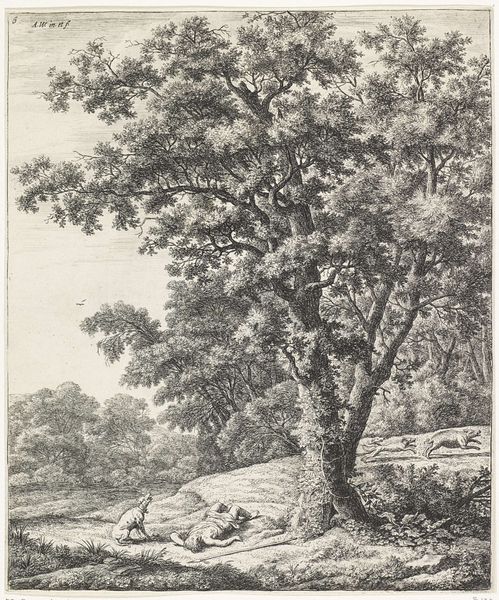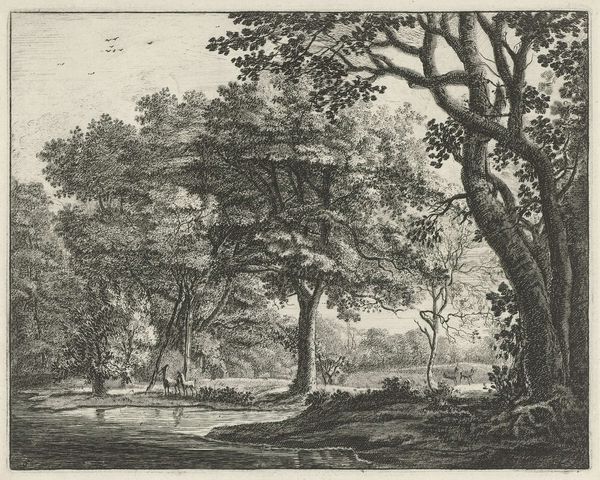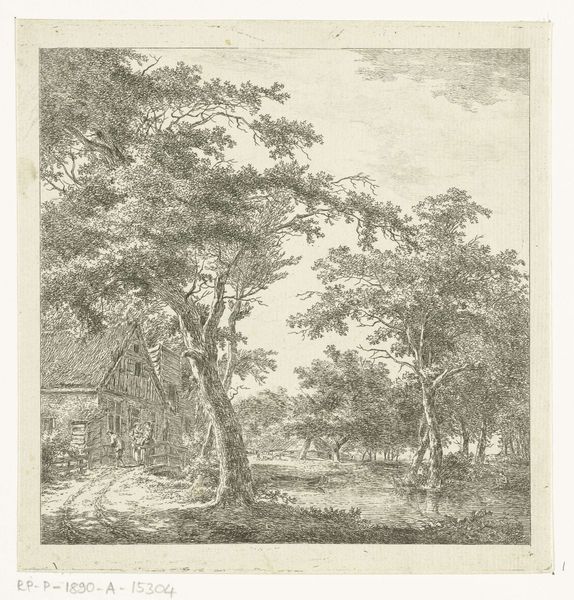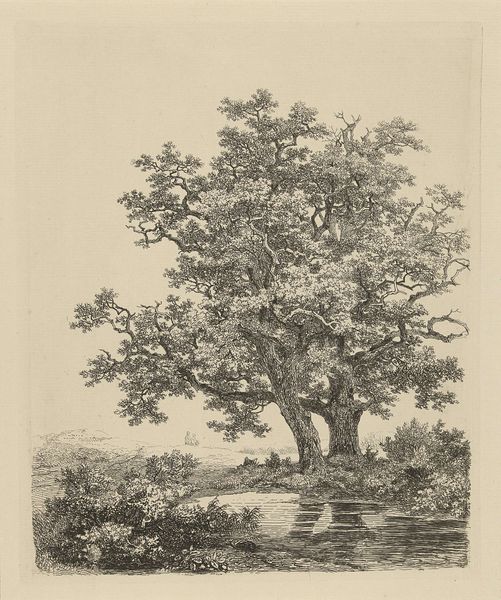
Dimensions: height 362 mm, width 261 mm
Copyright: Rijks Museum: Open Domain
Curator: This is "Mother and Child Seated Under Trees," a drawing made with pen and ink on paper attributed to Egbert van Drielst, created sometime between 1755 and 1818. Editor: It feels melancholic. Despite the intimate scene of a mother and child, there's a certain somber quality in the muted tones and dense, almost overwhelming, depiction of the trees. Curator: Van Drielst, a landscape artist, often infused his scenes with elements of Romanticism. The massive trees dwarf the figures, suggesting humanity's small place within the grand scheme of nature. You see a similar motif reflected in literature and philosophy of the period. Editor: Absolutely. The forest isn't just a backdrop; it feels like an active participant, perhaps even a symbol of refuge and resilience, given the mother and child's presence. Is she seeking shelter or solitude here? What socio-economic circumstances place them in the shadow of these immense trees? Curator: Consider the iconographic significance of the tree itself. In many cultures, the tree is an emblem of life, growth, family, and lineage. Placing the mother and child at its base underscores themes of nurture and inherited wisdom. Perhaps it is also related to indigenous mythologies or traditions about natural environment, that would give these populations specific values and morals, Editor: I agree, although, as an activist, I wonder about its place in a social hierarchy that placed laborers and their families close to the natural resources that defined much of the economy in 18th century. I feel the symbolism you describe exists in opposition to real conditions. Is there an irony being expressed through its representation of scale? Curator: Perhaps the symbolism works on several levels at once. While it idealizes the bond between mother and child, the composition simultaneously reminds us of their vulnerable position relative to external forces of nature, social and economic forces. The drawing invites the viewer to imagine possible tensions. Editor: Exactly, by acknowledging the social framework, it prompts a deeper conversation about the interplay between personal narrative and power structures during this period. And perhaps that allows a sense of resilience, for people that feel marginalized. Curator: Thank you. The symbolic layering and ambiguity definitely enriches its reading. Editor: Agreed. There's something powerful in holding these dualities.
Comments
No comments
Be the first to comment and join the conversation on the ultimate creative platform.
